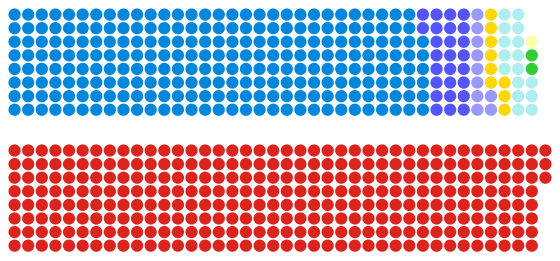| 1950–1951 Parliament of the United Kingdom | |||||
|---|---|---|---|---|---|
| |||||
 Palace of Westminster in 1950 | |||||
| Overview | |||||
| Legislative body | Parliament of the United Kingdom | ||||
| Term | 23 February 1950 – 26 October 1951 | ||||
| Election | 1950 United Kingdom general election | ||||
| Government | Second Attlee ministry | ||||
| House of Commons | |||||
| Members | 625 | ||||
| Speaker | Douglas Clifton Brown | ||||
| Leader | Herbert Morrison James Chuter Ede | ||||
| Prime Minister | Clement Attlee | ||||
| Leader of the Opposition | Winston Churchill | ||||
| Third-party leader | Clement Davies | ||||
| House of Lords | |||||
| Lord Chancellor | Earl Jowitt | ||||
This is a complete list of members of parliament elected to the Parliament of the United Kingdom at the 1950 general election, held on 23 February 1950.
Contents
Notable newcomers to the House of Commons included Edward Heath, Horace King, Fred Mulley, Bernard Braine, Harry Hylton-Foster, Iain Macleod, Gerald Nabarro, Reginald Maudling, Robert Carr, Bill Deedes, Enoch Powell, David Ormsby-Gore, Christopher Soames, Anthony Crosland,Jo Grimond and Tony Benn.
Tony Benn was the last MP elected in 1950 to leave Parliament, vacating Chesterfield in 2001 after retiring from politics following a 3-decade backbench period, where he spent his final years vigorously opposing the Labour leader and prime minister Tony Blair's foreign policy as leader of the Stop the War Coalition. He made a record three unsuccessful challenges for Labour leadership from the left of the party.
